The Epic Rivalry: The Story of Adidas and Puma
The bitter rivalry between Adidas and Puma is one of the greatest business feuds in history. While today, these two German sportswear giants compete on the global stage as multibillion-dollar corporations, their origins began with two brothers growing up in a small Bavarian village in the 1920s.
The Dassler brothers, Adolf (Adi) and Rudolf (Rudi), started as partners, launching the Dassler Brothers Shoe Company in the washing room of their mother's house. But tensions rose as their company expanded, ultimately leading to a dramatic split in 1948 that divided not just a business but a family and a town.

From their humble beginnings and shared dreams, a once close-knit family has now spent decades trading insults and lawsuits across the 15 miles that separate the rival companies' headquarters in the rival towns of Herzogenaurach and Jochberg. This decades-long saga of friendship turned to enmity is filled with all the drama of a Shakespearean tragedy.
Though the Dassler brothers have passed away, their feud continues through competition between their respective athletic brands. Even today, many residents of Herzogenaurach still identify themselves as either “Adidas” or “Puma”, refusing to associate with the opposing side.
This is the story of Adidas and Puma – a family drama, a corporate feud, and a symbol of national pride that continues to unfold today on fields and in stores worldwide. It's a tale of ambition and betrayal, competition taken to the extreme, and how a ruptured relationship transformed the sports business forever.
Table of Contents
The Founding of Adidas and Puma
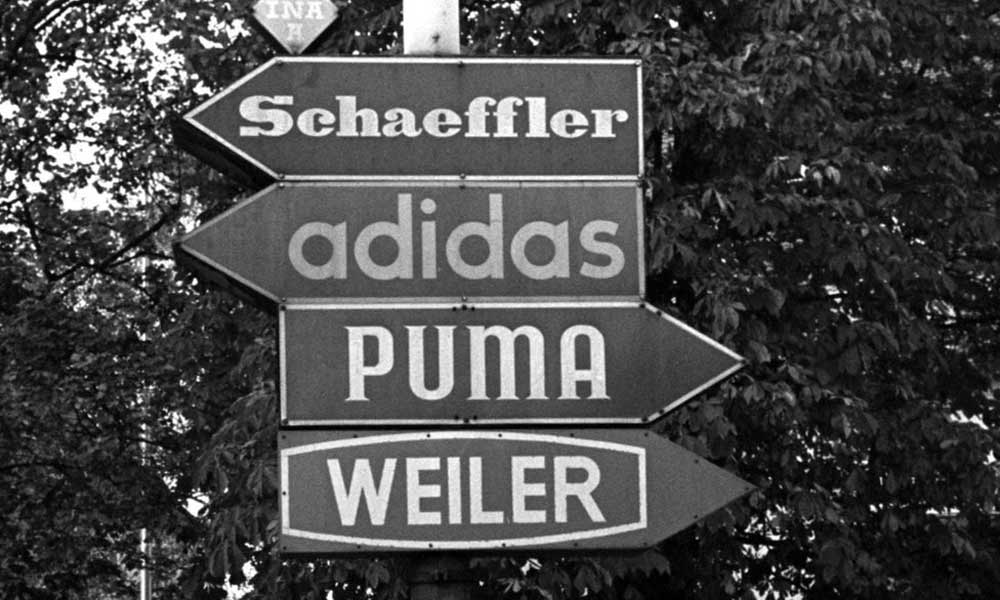
Adidas and Puma, two of the world's most powerful sporting brands, were founded by the Dassler brothers in Herzogenaurach, Germany, 60 years ago. Adolf and Rudolf Dassler, the brothers behind these iconic brands, had a tumultuous relationship that eventually led to the split of their company due to personal conflicts. In 1949, Adolf established Adidas, while Rudolf founded Puma in 1948. Both companies quickly rose to prominence in the sports apparel industry and signed endorsement deals with famous athletes, propelling their success.
This rivalry between Adidas and Puma profoundly impacted the town of Herzogenaurach. The division caused by the feud determined which businesses the city supported. Puma's factory was located to the south, while Adidas's factory was situated to the north. This geographical separation symbolised the divide between the two brands and their supporters.
The rivalry extended beyond the companies and even influenced football clubs in Herzogenaurach, leading to a culture of hatred between employees. Puma sponsored FC Herzogenaurach, while ASV Herzogenaurach was sponsored by Adidas, intensifying the competition between the two brands.
Adidas and Puma achieved significant success despite Adolf and Rudolf's personal conflicts. Adidas gained international exposure by sponsoring the West German national team in the 1954 World Cup, which they won. This victory propelled Adidas to new heights and solidified its position as a leading sports brand. On the other hand, Puma won the business battle in the 1970 World Cup by sponsoring Pelé, one of the greatest football players of all time. This move helped Puma gain significant visibility and establish itself as a formidable competitor to Adidas.
The Rivalry Between the Dassler Brothers

The bitter feud between Adolf and Rudolf Dassler led to the creation of Adidas and Puma, two of the biggest shoe-manufacturing companies in the world. The rivalry between the brothers went beyond their businesses and profoundly impacted the town of Herzogenaurach. Puma's factory is in the south, and Adidas's factory is in the north, symbolising the divide between the two brands and their supporters.
One of the most significant moments in the rivalry was the breaking of the “Pelé Pact.” The Dassler brothers had agreed not to sign a deal with Pelé for the 1970 World Cup, but Puma broke the pact and signed the legendary football player. This move by Puma was a significant blow to Adidas and further intensified the rivalry between the two brands. Despite their shared history and success, the Dassler brothers never reconciled before their death. They were buried on opposite sides of the same graveyard, symbolising their lasting animosity.
The rivalry between the Dassler brothers profoundly impacted the sports industry. Their competition pushed Adidas and Puma to innovate and develop new marketing strategies to stay ahead. Barbara Smit's book, “Sneaker Wars: The Enemy Brothers Who Founded Adidas and Puma and the Family Feud That Forever Changed the Business of Sports,” explores the breaking of the Pelé Pact and its impact on the relationship between the two companies.
- Smit, Barbara (Author)
- English (Publication Language)
- 400 Pages – 03/17/2009 (Publication Date) – Ecco (Publisher)
While the rivalry between Adidas and Puma is often seen as a negative aspect of their history, it also fueled their success. The constant competition between the two brands pushed them to deliver cutting-edge products and stay at the forefront of the sports apparel industry. The rivalry drove innovation and marketing strategies that shaped the industry and elevated both companies to global success.
Critical Moments in the History of Adidas and Puma

Throughout history, Adidas and Puma have had their fair share of critical moments defining their rivalry. Adidas gained international exposure by sponsoring the West German national team in the 1954 World Cup, which they won. This victory propelled Adidas to new heights and solidified its position as a leading sports brand. The iconic image of the West German captain, Fritz Walter, wearing Adidas boots during the final became an enduring symbol of the brand's success.
Conversely, Puma won the business battle in the 1970 World Cup by sponsoring Pelé, one of the greatest football players ever. This move helped Puma gain significant visibility and establish itself as a formidable competitor to Adidas. Pelé's endorsement of Puma marked a turning point for the brand, as they positioned themselves as a company that champions individuality and rebels against the establishment.
Another critical moment in the history of Adidas and Puma was the emergence of Nike as a significant competitor in the sports apparel market. Nike's global dominance disrupted the industry and posed new challenges for Adidas and Puma. However, the rivalry between Adidas and Puma, along with their established legacy and strong brand recognition, allowed them to adapt to the changing landscape and maintain their position in the market.
The competition between Adidas and Puma continues to drive innovation in the sports apparel industry. Both companies invest heavily in research and development to create technologically advanced products that meet the ever-changing needs of athletes. This commitment to innovation ensures that Adidas and Puma remain at the forefront of the industry, constantly pushing the boundaries of what is possible in sports apparel.
Marketing Strategies and Innovations
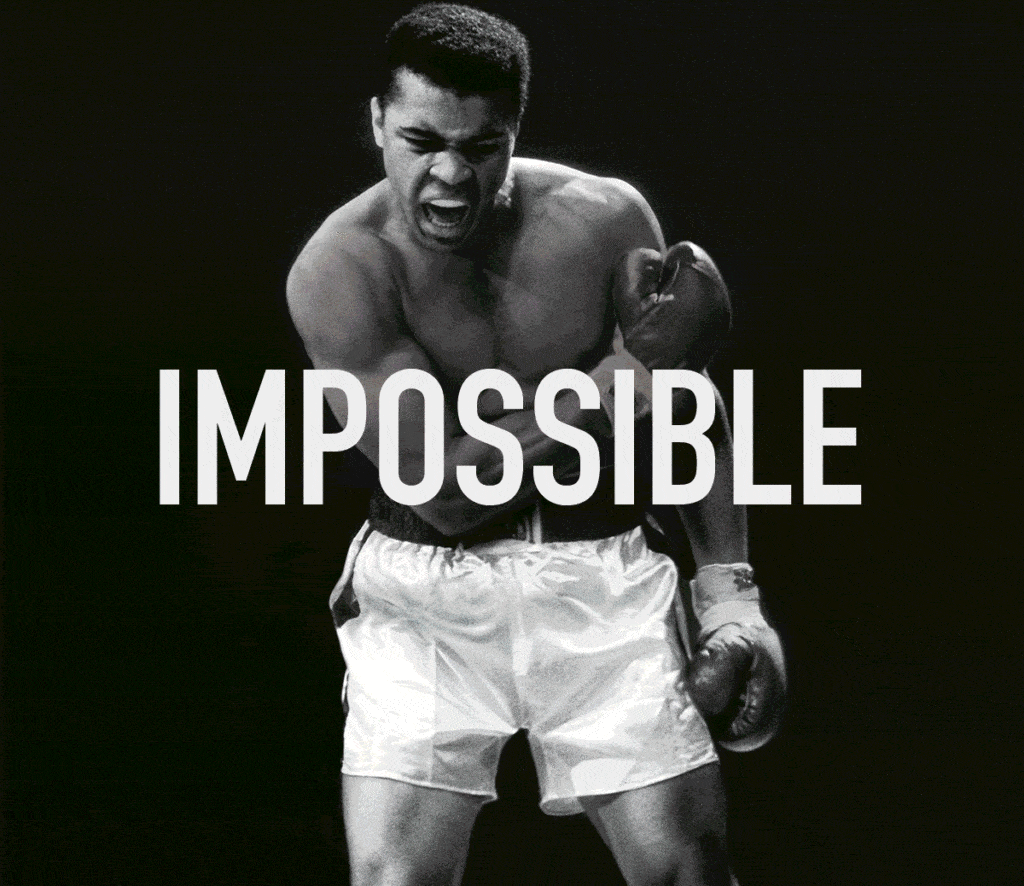
The rivalry between Adidas and Puma has driven both companies to secure endorsements with top athletes and celebrities, enhancing their brand image. These endorsements have played a crucial role in shaping the perception of the two brands and attracting consumers. From famous footballers like Lionel Messi and Cristiano Ronaldo to global icons like Beyoncé and Rihanna, Adidas and Puma have successfully aligned themselves with influential figures who embody their brand values.
In addition to celebrity endorsements, both Adidas and Puma have employed innovative marketing tactics and product development strategies to stay competitive. They have built brand centres and showrooms in Herzogenaurach to showcase their successful products and further strengthen their presence in the town. These initiatives allow both companies to connect with consumers and create immersive experiences around their brands. Visitors to these brand centres can explore the history of Adidas and Puma, try out the latest products, and gain a deeper understanding of the brands' commitment to quality and innovation.
Furthermore, Adidas and Puma have embraced digital marketing strategies to reach a wider audience. They have leveraged social media platforms and online influencers to promote their products and personally engage consumers. By utilising these digital channels, Adidas and Puma have connected with a younger generation of consumers increasingly influenced by social media and online trends.
Impact on the Sports Industry

The rivalry between Adidas and Puma has significantly impacted the sports industry. It has driven competition and innovation in sports apparel, constantly pushing both brands to improve and deliver cutting-edge products to consumers. The intense rivalry between the two companies has been a driving force behind technological advancements, design, and performance in the sports apparel market.
Adidas and Puma have introduced groundbreaking innovations in their products to gain a competitive edge. From Adidas's Boost technology, which provides superior cushioning and energy return, to Puma's Netfit lacing system, which allows for customisable fit and support, these brands have revolutionised how athletes perform and experience their sports. The rivalry between Adidas and Puma has fueled their determination to develop innovative solutions that enhance athletes' performance and give them a competitive advantage.
However, in recent years, the emergence of Nike as a significant competitor has overshadowed the rivalry between Adidas and Puma. Nike's global dominance and aggressive marketing strategies have disrupted the sports apparel market, forcing Adidas and Puma to adapt to new challenges. The competition between these three industry giants has become increasingly fierce, with each brand vying for consumer attention and loyalty.
Nevertheless, Adidas and Puma are crucial in shaping the sports apparel market. Their rich history and legacy have made them iconic brands recognised worldwide. The rivalry between Adidas and Puma may have evolved, but its impact on the sports industry is undeniable.
Current Status of Adidas and Puma

Adidas is the more prominent company, employing 60,000 people compared to Puma's 20,000. Both Adidas and Puma still keep their headquarters in Herzogenaurach, demonstrating their commitment to the town and the legacy of the Dassler brothers. Both companies are expanding their presence in the city by building brand centres and showrooms to showcase their successful products.
Adidas has maintained its status as a global leader in sports apparel, with a diverse range of products catering to athletes of all sports and levels. The brand's collaborations with high-profile designers and celebrities have further elevated its image and appeal. Adidas has successfully positioned itself as a brand that combines performance, style, and sustainability, appealing to many consumers.
Puma, on the other hand, has undergone a significant transformation in recent years. The brand has redefined its identity, focusing on lifestyle, streetwear, and sports performance. Puma's collaborations with influential figures like Rihanna and its commitment to sustainability have helped it regain relevance and capture the attention of a younger audience.
Reconciliation and Legacy
There are conflicting reports about whether the Dassler brothers were reconciled before their deaths, but some sources suggest they may have made amends. Regardless of their relationship, the legacy of the Dassler brothers and their rivalry between Adidas and Puma continues to shape the sports industry today. The competition between these two brands has driven innovation, inspired generations of athletes, and impacted the sports apparel world.
- Amazon Prime Video (Video on Demand)
- Ken Duken, Torben Liebrecht, Jesse Albert (Actors)
- Oliver Dommenget (Director) – Uwe Kersken (Writer) – Zeitsprung Pictures GmbH (Producer)
- English (Playback Language)
- English (Subtitle)
The story of Adidas and Puma serves as a reminder of the power of rivalry and competition in driving progress and success. Personal conflicts may have fueled the Dassler brothers' feud, but it ultimately created two iconic brands that have left an indelible mark on the sports industry. The legacy of Adidas and Puma is a testament to the enduring power of determination, innovation, and the pursuit of excellence.
Puma's animal logo design

Puma's branding has evolved over the years. Initially, their logo featured an upside-down diamond with a puma-like creature leaping through a letter D, representing the Dassler name.
In 1971, Puma introduced a new, simplified logo with the company name in clean, modern lettering. Above the name, a sleek silhouette of a puma jumps dynamically. This redesign shifted towards a more minimal, contemporary aesthetic for the sportswear company.
While nods to Puma's origins remain, the current logo evokes speed and athleticism with its agile feline icon. The evolution of Puma's logo reflects the brand's continued innovation in the athletic apparel industry.
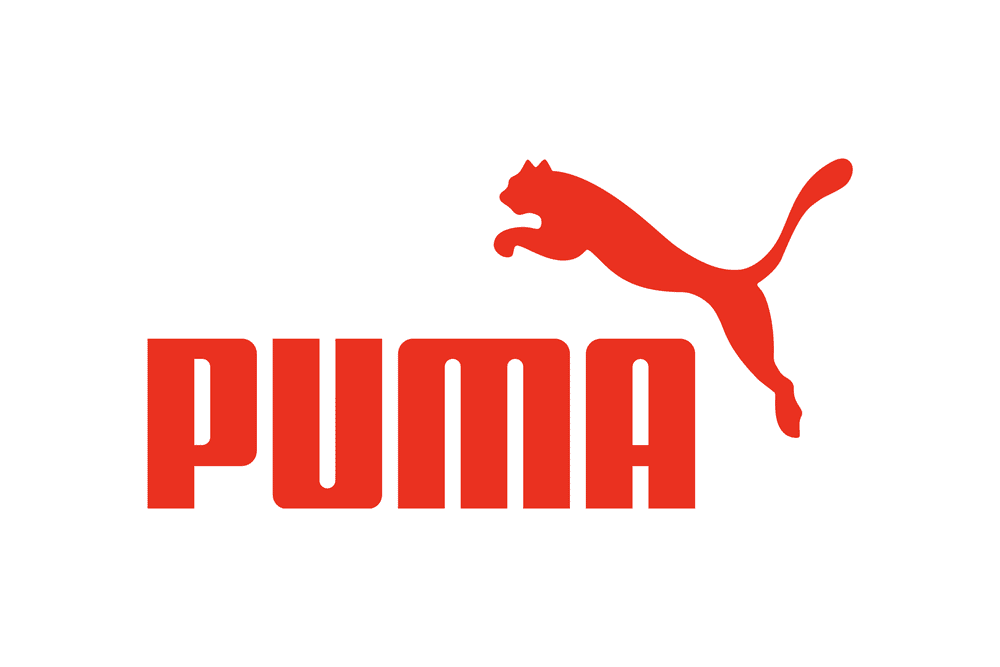
Adidas' trefoil logo design
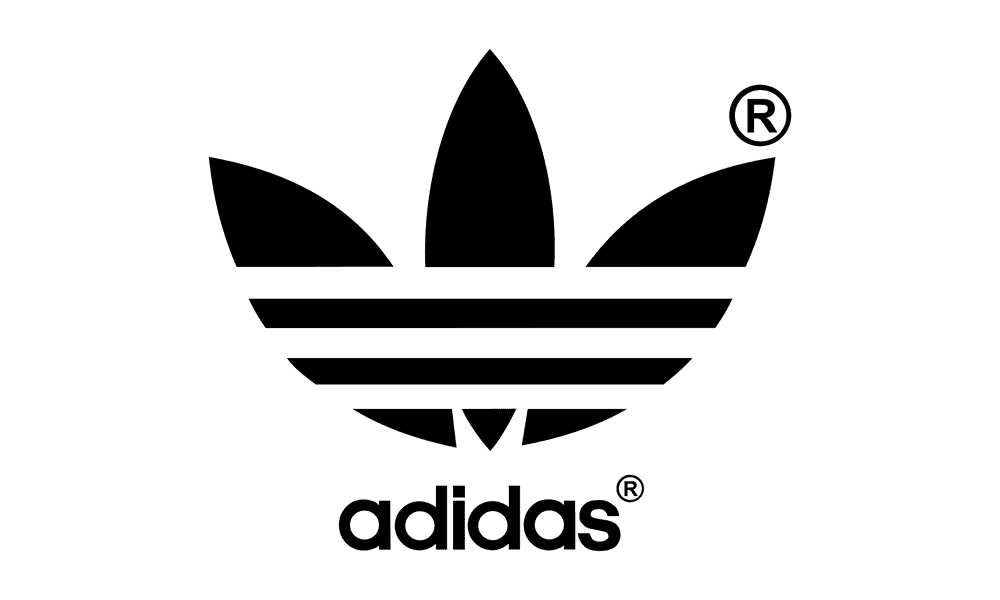
In 1972, Adidas unveiled a new logo that would become iconic – the trefoil. After reviewing over 100 options, the Adidas team selected the trefoil design.
The timing of the new logo marked an expansion for the company beyond just footwear into apparel and leisurewear. The three-leaf trefoil shape symbolised the continents where Adidas had a presence. The first leaf represents the Americas, the middle leaf represents Europe and Africa, and the third leaf Asia.
The famous Adidas three stripes are integrated into the trefoil design in the bottom portion of the logo. The trefoil logo was hugely successful on fashion and apparel items.
However, for performance sports clothing, Adidas recognised the need for a separate standalone logo for athletic gear. This paved the way for creating the well-known Adidas Performance logo in the decades to come.
Adidas' performance logo design

In 1990, Adidas debuted a new performance logo for athletic gear and equipment. This logo, created by Peter Moore, featured the iconic three stripes shaped into a mountain.
The mountain was intended to symbolise the challenges and obstacles faced by athletes and their drive to overcome them. Although simple in design, some initially criticised the asymmetrical look of the performance logo as too dull or visually unappealing.
By 1997, just seven years after its launch, the performance logo had become Adidas' primary brand. The original trefoil design was still used but switched to only represent Adidas' ‘heritage' products like the Originals line.
The trefoil had been an iconic fashion symbol, but the mountain performance logo better encapsulated Adidas' focus on innovation and enabling athletic achievement. Despite initial criticism, it quickly became an iconic brand image in the sports world. Although simple, the off-kilter mountain came to embody competitive grit and overcoming all obstacles to achieve athletic success.
The 2005 Adidas wordmark

In 2005, Adidas introduced a new version of its iconic 3-stripe logo and wordmark. While the stripes and font stayed the same, it was the first time they were combined directly with the Adidas name in the logo. This updated look aimed to keep brand consistency while giving the logo a fresh, modern feel.
Adidas expanded its global reach in 2006 when it acquired rival sportswear company Reebok. This strategic takeover strengthened Adidas' presence in the North American market and allowed it to compete directly with sportswear giant Nike. Today, Nike and Adidas are the two most prominent athletic shoe and apparel brands worldwide.
In 2011, Adidas launched the “All In” campaign to unite its major sub-brands under one coherent marketing strategy and message, like Adidas Originals and Adidas Performance. Whereas Adidas had previously promoted these lines separately, “All In” tied them together to present a unified face of the brand to customers. This campaign exemplified Adidas' efforts to streamline its brand identity across all products and audiences in the sports apparel space.
Adidas and Puma vs Nike

The sportswear industry is dominated by three major players – Nike, Adidas and Puma. Though they compete fiercely, there are some interesting similarities between these brands.
Let's look at the evolution of their logo designs over the years.
The Nike “Swoosh” is one of the most iconic logos in the world. Designed in 1971 by Carolyn Davidson for just $35, it represents the wing of the Greek goddess Nike, a symbol of victory and speed. The Swoosh has been updated over time to keep pace with Nike's brand image but still retains that sense of motion.
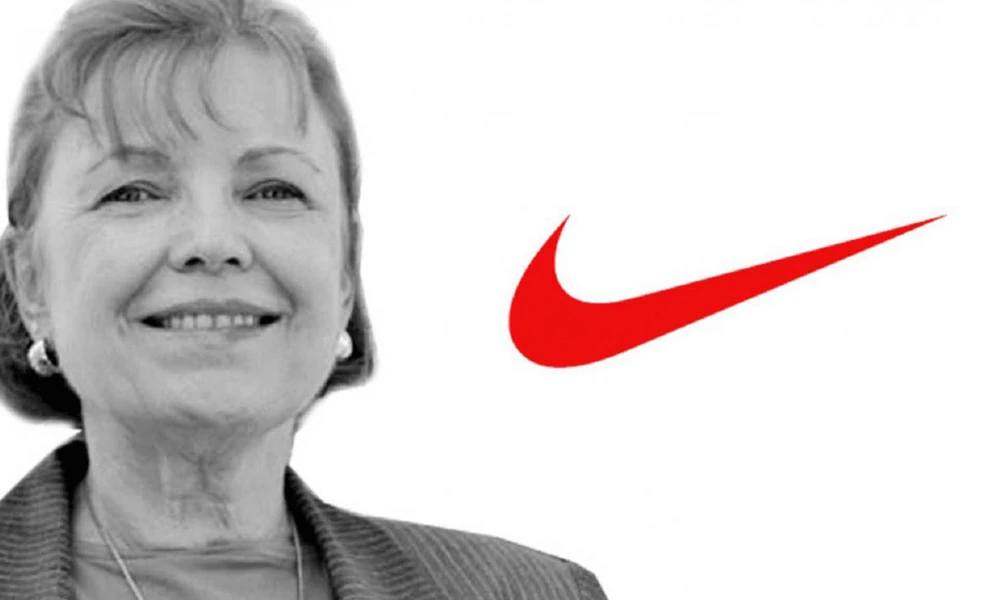
Adidas' trefoil and mountain logo also aim to convey movement and performance. The mountain shape represents the challenges athletes must overcome. The work and passion of company founder Adi Dassler inspires the trefoil.
Puma's leaping puma logo captures the speed and grace of the animal it takes its name from. The powerful cat encapsulates the brand's spirit of athleticism.
Though they take different forms, all three logos try to communicate motion and achievement. They also link back to inspirational references, whether Greek mythology for Nike, personal history for Adidas or nature for Puma.
While competing fiercely, these sports giants share some common threads in developing their iconic visual identities over the decades. Their logos distil their brand essences into memorable graphic symbols.
The Legacy of the Adidas vs Puma Rivalry
The legacy of the Adidas vs Puma rivalry continues to shape the sports industry today. The Adidas and Puma rivalry, which started 60 years ago, has driven significant innovation in the sports apparel industry.
The Adidas and Puma competition resulted in companies securing endorsements with top athletes and celebrities to enhance their brand image. The Adidas and Puma story is a testament to the power of rivalry and competition in driving progress and success.
Last update on 2024-05-05 / Affiliate links / Images from Amazon Product Advertising API


